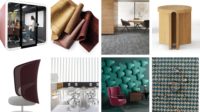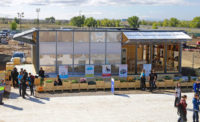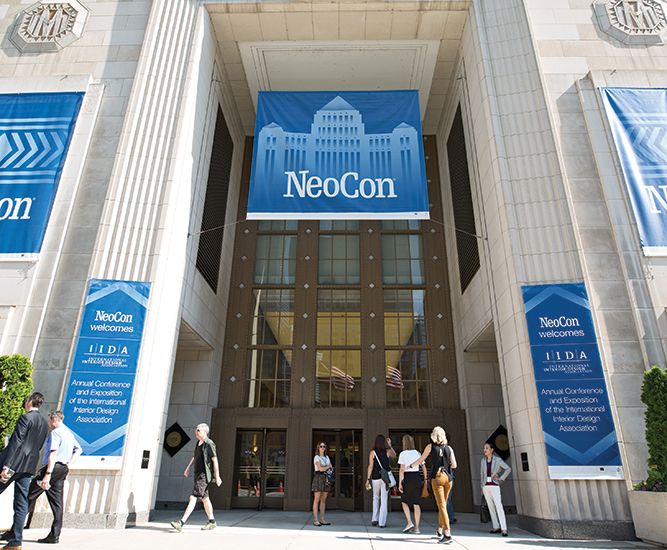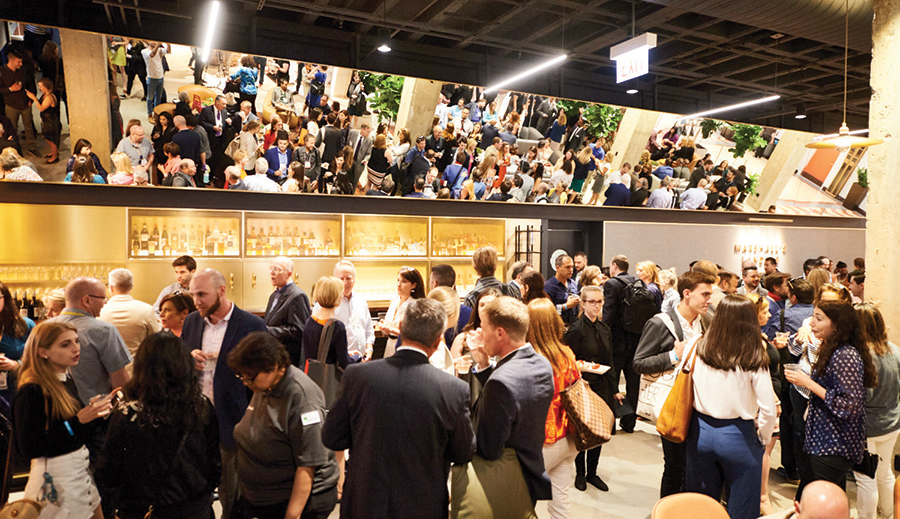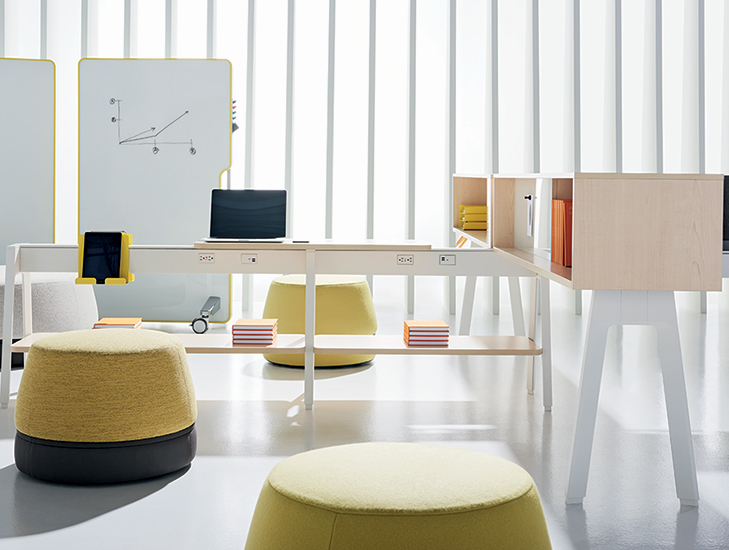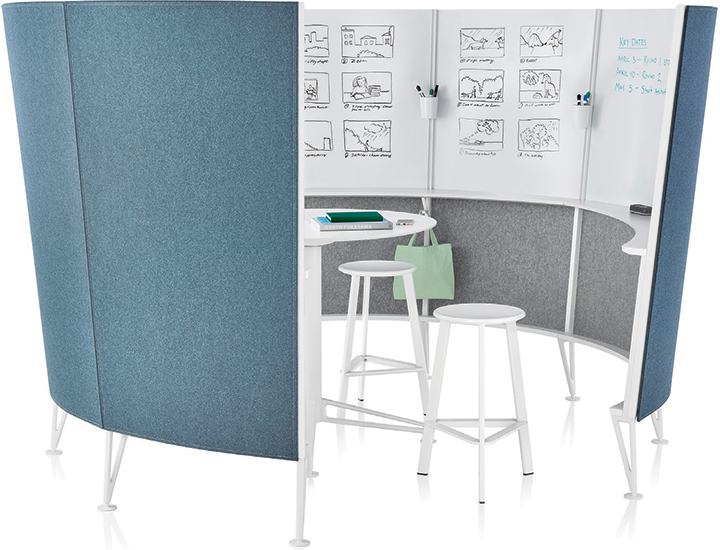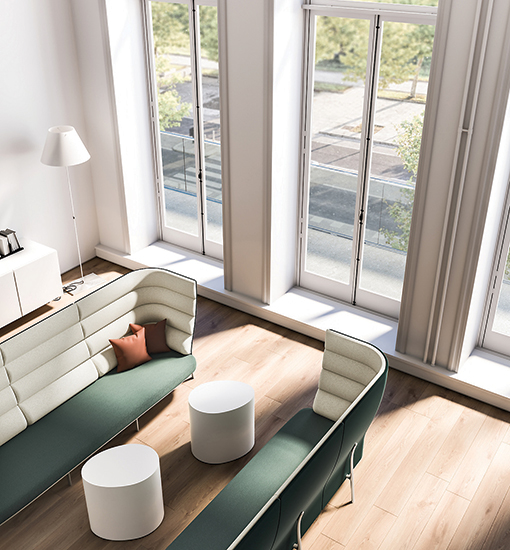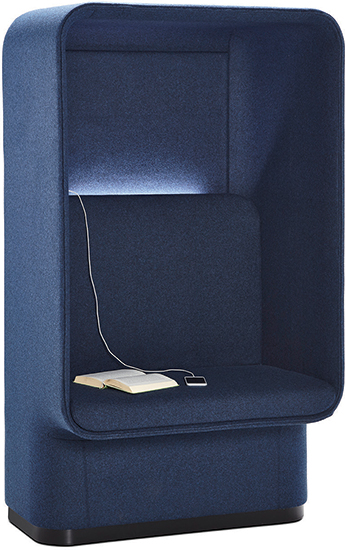NeoCon 2017 Highlights the Office’s Changing Landscape

The Merchandise Mart during NeoCon.
Photo © Daniel Kelleghan Photography

Marshall’s Landing, a new restaurant and lounge, opened atop the grand stair in the Mart in time for this year’s show.
Photo © Daniel Kelleghan Photography

Designers can build clusters of work-stations, storage areas, mini lounges, and impromptu meeting spots around the central power spine of Expansion Cityline.
Photo © Daniel Kelleghan Photography

Herman Miller’s Prospect is a semiprivate solution cus tomi zable for individuals or team workspaces.
Photo © Daniel Kelleghan Photography

Designed by Scott Wilson, Sono sofas feature optional high backs that transform lounge seating into quiet alcoves.
Photo © Daniel Kelleghan Photography

Koleksiyon’s Boccaporto places integrated lighting and power inside the booth, behind the sitter.
Photo © Daniel Kelleghan Photography






The annual contract furnishings show in Chicago may include products suitable for various contract environments, but it is still chiefly a bellwether of workplace design. Well attended as ever in its 49th year, the event in the Merchandise Mart drew more than 56,000 attendees—a 7 percent increase over last year’s crowd and a significant swath of office-design influencers from both architecture and interior design firms.
What noteworthy trends did they see at NeoCon? Exhibitor offerings tended to skew toward residential crossover, marked by technology integration, acoustical privacy, and customization.
Daniel Stromborg, head of the product design practice at Gensler’s Los Angeles office, reaches for the industry shorthand frequently used to describe the tide change: resi-mercial. “I think we’ve moved away from futuristic-looking workspaces toward a hybrid of resi-mercial and timeless design,” he says.
Aaron Wong, a design director at the San Francisco office of IA Interior Architects, agrees, adding, “As work environments continue to blur the lines between home and office, many manufacturers have enhanced this trend with their combinations of furniture and textiles.”
Cozier seating and occasional tables, also well suited to the home, showed up in nearly every major showroom from Herman Miller and Knoll to Allsteel and HBF.
Increasingly, homey profiles disguise high-performing technical functions. For example, Gensler collaborated with crossover brand West Elm Workspace on its new Conduit system. Central to the design is a backbone that conceals and routes power and data to workstations whose upholstered panels visually screen and help dampen sound. Teknion launched a similar system that distributes power and data via a central framework called Expansion Cityline. Specifiers can “build” a variety of work zones along this beam system by selecting components ranging from benching desks and storage units to lounge seating.
Meanwhile, as designers continue to disrupt the open-plan by reintroducing privacy, manufacturers have responded with furniture, acoustical accessories, and screening products that perform the job of semipermanent wall systems at lower costs. “Everyone seems to be developing a pod for lounge or nook seating,” says Gisselle Amador, an associate designer at the Miami office of IA.
In fact, pods and high-back seating standouts included Davis Furniture’s Soft Privacy, HBF’s Sono Sofa, and Koleksiyon’s Boccaporto. While not a furnishings manufacturer, 3form also launched something in the acoustical enclosures category: Its Seeyond Wall is a system of acoustic felt–covered modules with strong magnets that attach to one another, forming semiprivate enclosures. Meanwhile, Herman Miller’s Prospect line of semicircular freestanding systems—covered by acoustical fabric—can be customized for individuals or groups with desks, standing meeting tables, magnetic whiteboards or tackable finishes, and other components.
For fully enclosed, acoustically isolated spaces without walls, a freestanding phone booth is an option. One such product, which launched at NeoCon, was the debut offering from Jabbrrbox, a company founded by former Studios Architecture associate Brian Hackathorn and entrepreneur Jeremy Jennings. Jabbrrbox One is a complete work environment outfitted with Philips Hue LED lighting, power outlets, USB ports, and a ventilation system; Jabbrrbox Chromebooth adds a 24-inch Google Chromebase for videoconferencing.
In the end, all trends underscore the idea that workers should have options. “We all want to see more manufacturers addressing the individual [and] their needs [for] flexibility and choice,” says Stromborg. “That’s not so much a trend as a need.”



